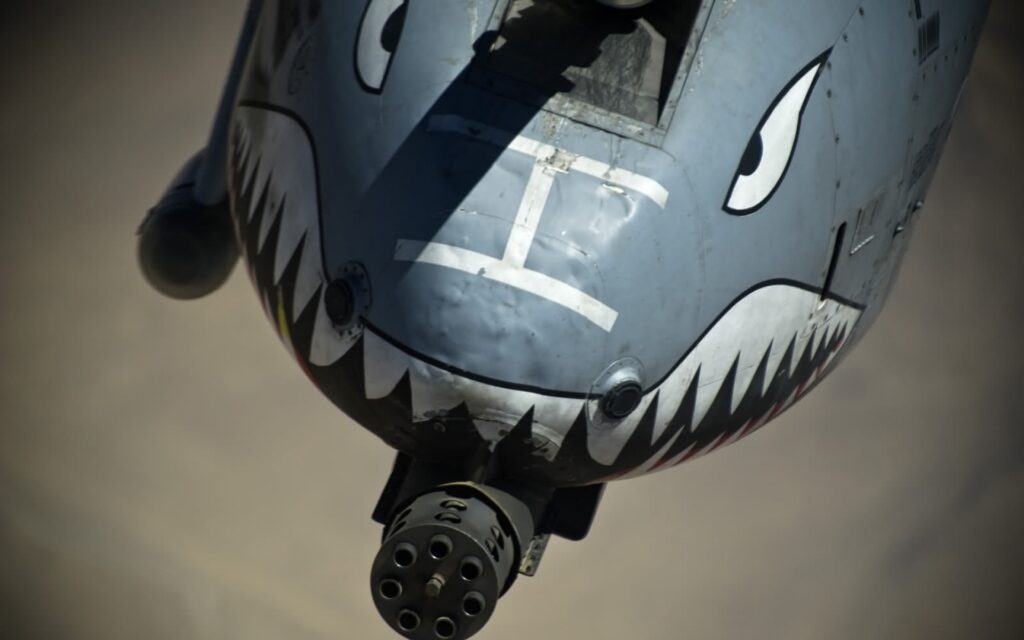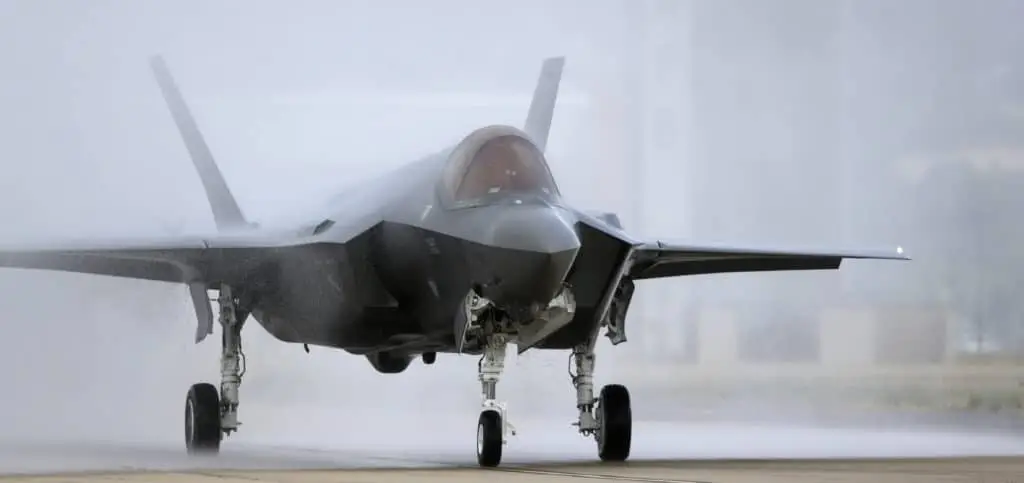The grounds of the U.S. Air Force Academy in Colorado Springs are packed to the gills with Air Force history. Among the legends on display is a green-colored Air Force Reserve A-10 Thunderbolt II (also known as a Warthog), positioned with its nose skyward. A closer look at that nose reveals its name: “The Chopper Popper.”
How the Chopper Popper Keeps the Tradition of Nose Art Alive
Nose art isn’t that common in the Air Force these days, but it’s not totally forbidden. The aging but plucky fleet of A-10s have all but kept the tradition alive in recent decades. Warthogs are usually bearing teeth or tusks on their noses, not the sea creature gripping a helicopter in its massive claws. The Chopper Popper’s art is an homage to its nickname, picked up for the stunning air-to-air kill made by then-Capt. Bob Swain during the first Gulf War.
The A-10 is known for a lot of things, but dogfighting isn’t one of them. It was designed to be a gun with wings, a flying tank that could get in close with the grunts on the ground and put lots of holes in pesky enemy armor with its massive GAU-8 Avenger cannon. In fact, it is the only airframe designed solely for close-air support ever made by the U.S. Air Force.
But that doesn’t mean it couldn’t take down another aircraft (or anything else for that matter), given the opportunity. The GAU-8 Avenger is a hydraulic-driven autocannon that fires 30×173 millimeter, armor-piercing incendiary, high-explosive rounds with a depleted uranium core. If it can shred the toughest tanks of the Cold War, an aircraft in flight wouldn’t stand a chance. Because the A-10’s maximum speed is 439 miles per hour, most aircraft are out of its reach – but not helicopters.

The Story of The Chopper Popper’s First Airborne Victory
On February 6, 1991, Capt. Bob Swain had just fired Maverick missiles at Iraqi tanks on the ground when he saw two black dots racing across the desert. There was no dust and he had never seen anything like it on the ground before. He told his observation plane it must be a helicopter. After his OV-10 observation plane confirmed they were indeed helicopters, Swain moved to intercept.

When the helicopters noticed they were being hunted, they broke away from each other, one to the north, and one to the south. Swain stayed on the one to the south, the one about to become a part of Air Force lore. At 50 feet above the ground, the enemy chopper ws too low for the A-10’s AIM-9 Sidewinder missiles, so – despite being a full mile away – Swain switched to the gun, with a maximum range of 12,000 feet.

“I started firing about a mile away,” Swain told the Los Angeles Times after the incident. “Some of the bullets ran through him, but we weren’t sure if it was stopped completely. So I came back with the final pass, hit it and it fell apart.
“On the final pass, I shot about 300 bullets at him. That’s a pretty good burst. On the first pass, maybe 75 rounds. The second pass, I put enough bullets down, it looked like I hit with a bomb.
“We tried to ID the helicopter after we were done and it was just in a bunch of little pieces, so we can’t tell what type it was.”
It was the first air-to-air kill in the A-10’s operational history. After writing this small but mighty chapter of Air Force History, Swain, a reservist, went home and resumed flying Boeing 747s for USAir.
Read About Other Military Myths and Legends
If you enjoyed learning about the Chopper Popper, we invite you to read about other military myths and legends on our blog. You will also find military book reviews, veterans’ service reflections, famous military units and more on the TogetherWeServed.com blog. If you are a veteran, find your military buddies, view historic boot camp photos, build a printable military service plaque, and more on TogetherWeServed.com today.

0 Comments